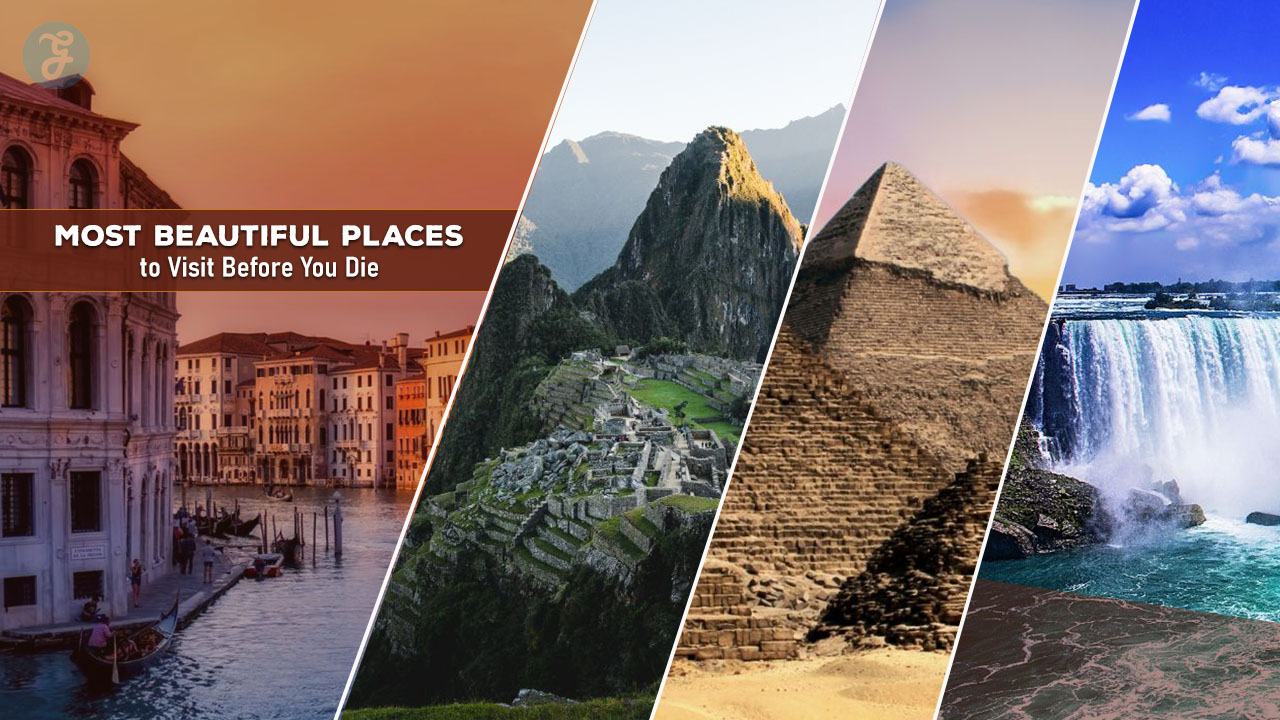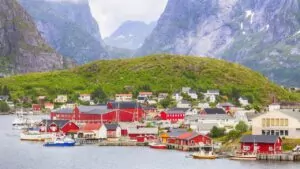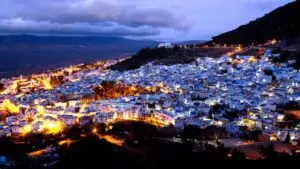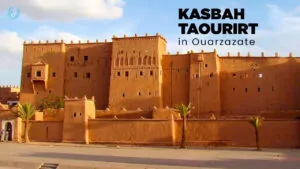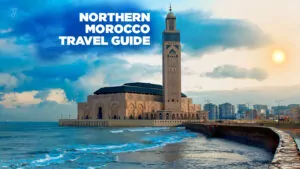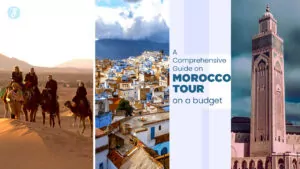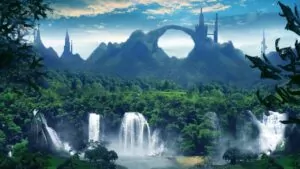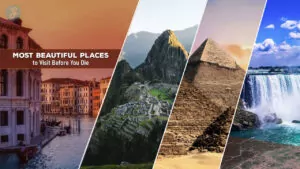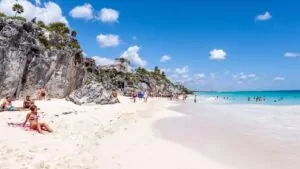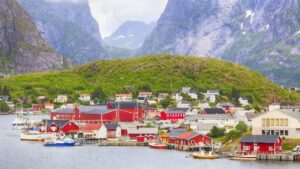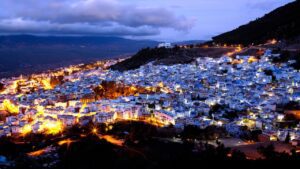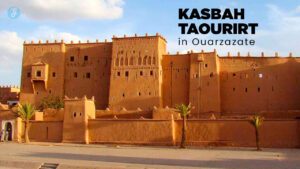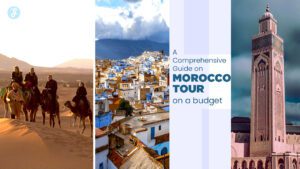Our world is full of breathtaking wonders, from natural marvels to human-made masterpieces. These incredible places can inspire us, change our perspective, and create memories that last a lifetime. This article will explore 25 of the most beautiful destinations on Earth that should be on everyone’s bucket list. Whether you’re a nature lover, a history buff, or an adventure seeker, these places offer something truly special. Let’s embark on a journey to discover some of the most beautiful places to visit before you die.
1. Machu Picchu, Peru
High in the Andes Mountains of Peru sits Machu Picchu, an ancient Incan city shrouded in mystery and beauty. Originally constructed in the 15th century and subsequently abandoned, the UNESCO World Heritage site saw its rediscovered status in 1911. The ruins, set against a backdrop of steep, green mountains, offer a glimpse into the ingenuity of the Incan civilization.
Key facts:
- Elevation: 7,970 feet (2,430 meters) above sea level.
- Best time to visit: May to September (dry season)
- Nearby city: Cusco
Visitors can explore the well-preserved stone structures, including temples, homes, and agricultural terraces. The iconic Sun Gate provides a panoramic view of the entire site. To fully appreciate Machu Picchu, consider hiking the Inca Trail, a multi-day trek that leads you through stunning mountain scenery before arriving at the lost city.
2. Great Barrier Reef, Australia
The Great Barrier Reef is the world’s largest coral reef system and one of the most diverse ecosystems on the planet. Stretching over 1,400 miles along Australia’s northeast coast, this natural wonder is visible from space and home to thousands of species of marine life.
Key facts:
- Size: Covers approximately 133,000 square miles (344,400 square kilometers).
- Number of coral species: over 400
- Number of fish species: more than 1,500
Snorkeling or diving on the Great Barrier Reef offers an unforgettable experience. Swim alongside colorful fish, sea turtles, and even gentle giants like whale sharks. The reef also features unique above-water ecosystems, including tropical islands and coastal mangrove forests.
Conservation efforts are crucial for protecting this fragile environment from threats like climate change and ocean acidification. Visitors can contribute by choosing eco-friendly tour operators and practicing responsible tourism.
3. Santorini, Greece
With its iconic white-washed buildings and blue-domed churches perched on cliffs overlooking the Aegean Sea, Santorini is a postcard-perfect Greek island. A massive volcanic eruption thousands of years ago formed this crescent-shaped island, resulting in its dramatic landscape.
Key facts:
- Population: approximately 15,000
- Main towns: Fira, Oia, and Imerovigli
- The region is renowned for its sunsets, white-and-blue architecture, and volcanic beaches.
Santorini’s beauty extends beyond its picturesque villages. The island boasts unique black-sand beaches, ancient ruins, and renowned wineries. Don’t miss the chance to watch the sunset from Oia, widely considered one of the most beautiful sunsets in the world.
For history enthusiasts, the archaeological site of Akrotiri offers a glimpse into a Minoan Bronze Age settlement preserved by volcanic ash, similar to Pompeii.
4. Banff National Park, Canada
Nestled in the heart of the Canadian Rockies, Banff National Park is a haven for nature lovers and outdoor enthusiasts. The park’s stunning landscapes include snow-capped mountains, turquoise lakes, and dense forests.
Key facts:
- Established: 1885 (Canada’s first national park)
- Size: 2,564 square miles (6,641 square kilometers)
- Notable features: Lake Louise, Moraine Lake, Columbia Icefield
Banff offers activities for every season. In summer, visitors can hike scenic trails, canoe on pristine lakes, or spot wildlife like elk and grizzly bears. Winter transforms the park into a wonderland for skiing, snowboarding, and ice skating.
The town of Banff, located within the park, provides a charming base for exploration with its mountain-style architecture, shops, and restaurants.
5. Taj Mahal, India
The Taj Mahal, located in Agra, India, is perhaps the world’s most famous monument to love. The Mughal Emperor Shah Jahan built this stunning white marble mausoleum in memory of his beloved wife, Mumtaz Mahal.
Key facts:
- Construction period: 1632-1653
- Architectural style: Mughal architecture (a blend of Indian, Persian, and Islamic styles)
- UNESCO World Heritage Site since 1983
The Taj Mahal’s beauty lies not only in its grand scale but also in its intricate details. The structure is perfectly symmetrical, with delicate inlay work and calligraphy adorning its walls. The reflecting pool and manicured gardens enhance the overall aesthetic.
To fully appreciate the Taj Mahal’s beauty, visit at different times of day. The marble changes color subtly, appearing pinkish in the morning, milky white in the evening, and golden under moonlight.
6. Grand Canyon, USA
A testament to the power of nature is the Grand Canyon, which the Colorado River carved out over millions of years. This vast chasm in Arizona reveals layers of colorful rock that tell the story of Earth’s geological history.
Key facts:
- Length: 277 miles (446 kilometers)
- Depth: Up to 1 mile (1.6 kilometers)
- Age: Estimated to be around 70 million years old.
Visitors can experience the Grand Canyon’s majesty from various viewpoints along the rim or by hiking into the canyon itself. For the adventurous, rafting trips down the Colorado River offer a unique perspective from the canyon floor.
The Grand Canyon is not just a scenic wonder; it’s also home to diverse ecosystems and wildlife, from desert flora to bighorn sheep and California condors.
7. Bora Bora (French Polynesia)
Bora Bora, a small island in the South Pacific, is the epitome of tropical paradise. Known for its crystal-clear lagoon, overwater bungalows, and lush green peaks, this destination offers unparalleled beauty and relaxation.
Key facts:
- Location: French Polynesia’s Society Islands
- Size: 12 square miles (30.55 square kilometers)
- Main languages: French and Tahitian
The coral reef-protected lagoon of the island is home to a variety of vibrant marine life, making it ideal for snorkeling and diving. Mount Otemanu, the island’s highest point, provides a dramatic backdrop to the turquoise waters.
Bora Bora’s luxury resorts, many of which feature iconic overwater bungalows, offer a unique way to experience the island’s beauty. Visitors can enjoy activities like paddleboarding, jet skiing, or simply relaxing on pristine beaches.
8. Venice, Italy
Built on more than 100 small islands in a lagoon in the Adriatic Sea, Venice, the “City of Canals,” is a unique and romantic destination. With its gondola-filled waterways, stunning architecture, and rich history, Venice captivates visitors from around the world.
Key facts:
- Population: approximately 260,000
- Number of canals: 150+
- Famous for: Venetian Gothic architecture, glassmaking, and carnival celebrations
Key attractions include St. Mark’s Basilica, the Doge’s Palace, and the Rialto Bridge. However, the true allure of Venice lies in exploring its narrow streets, uncovering hidden squares, and discovering local cafes.
Venice faces challenges from overtourism and rising sea levels. Visitors can help preserve this unique city by traveling responsibly and considering visits during off-peak seasons.
9. Zhangjiajie National Forest Park, China
Zhangjiajie National Forest Park in China’s Hunan Province is known for its towering sandstone pillars, lush forests, and misty landscapes. This otherworldly scenery served as inspiration for the floating mountains in the movie “Avatar.”
Key facts:
- Established: 1982 (China’s first national forest park)
- Notable feature: Hallelujah Mountain, renamed after “Avatar.”
- Home to: over 3,000 plant species and numerous rare animals
The park’s most famous attraction is the Zhangjiajie Grand Canyon Glass Bridge, the world’s longest and highest glass-bottomed bridge. For a less heart-pounding experience, take a cable car ride for panoramic views of the stunning landscape.
Hiking trails wind through the park, offering close-up views of the unique rock formations and opportunities to spot wildlife like macaques and salamanders.
10. Northern Lights (Aurora Borealis), Multiple Locations
The Northern Lights, also known as Aurora Borealis, are one of nature’s most spectacular light shows. This celestial display occurs when charged particles from the sun collide with atoms in Earth’s atmosphere, creating dancing curtains of colorful light in the night sky.
Key facts:
- Best viewing locations: Iceland, Norway, Finland, Sweden, Canada, and Alaska
- Best time to see: generally September to March
- Colors: typically green, but can also be pink, red, blue, and purple.
While one can see the Northern Lights from many locations in the Northern Hemisphere, Troms in Norway, Reykjavik in Iceland, and Fairbanks in Alaska are some of the best places to witness this phenomenon.
For the best chance of seeing the aurora, plan your trip during the darker winter months and choose a location away from city lights. Remember that solar activity and weather conditions play a crucial role in ensuring sightings.
11. Petra, Jordan
Hidden in the red rock cliffs of southern Jordan, Petra is an ancient city that seems to defy time. This UNESCO World Heritage site, once the capital of the Nabataean Kingdom, is famous for its rock-cut architecture and water conduit system.
Key facts:
- Founded: Around 312 BCE
- Rediscovered by the Western world: 1812
- Nickname: “Rose City” due to the color of the stone
The most iconic structure in Petra is the Treasury (Al-Khazneh), a massive facade carved into the sandstone cliff. But Petra offers much more to explore, including a Roman-style theater, monumental tombs, and a monastery perched high above the valley.
To fully appreciate Petra’s beauty and history, consider hiring a local guide. The best time to visit is early in the in the morning or late in the in the afternoon, when the changing light brings out the rich colors of the rocks.
12. Salar de Uyuni, Bolivia
Salar de Uyuni in Bolivia is the world’s largest salt flat, creating an otherworldly landscape that seems to stretch endlessly into the horizon. During the rainy season, a thin layer of water transforms the salt flat into a giant mirror, reflecting the sky and creating a surreal, dreamlike environment.
Key facts:
- Size: 4,086 square miles (10,582 square kilometers)
- Elevation: 11,995 feet (3,656 meters) above sea level
- Salt crust depth: 3 to 32 feet (1 to 10 meters)
Visitors can take guided tours across the salt flats, often staying in hotels made entirely of salt. The area is also home to colorful lagoons, volcanic hot springs, and unique wildlife like flamingos and viscachas (rabbit-like rodents).
For photographers, Salar de Uyuni offers endless opportunities for creative shots, especially during sunrise and sunset when the light plays across the vast white expanse.
13. Yellowstone National Park, USA
Yellowstone, the world’s first national park, is a wonderland of geothermal features, diverse wildlife, and stunning landscapes. Located primarily in Wyoming, USA, the park is known for its colorful hot springs, erupting geysers, and dramatic canyons.
Key facts:
- Established: 1872
- Size: 3,472 square miles (8,991 square kilometers)
- Home to: Over 60% of the world’s geysers
Must-see attractions include the Old Faithful geyser, the Grand Prismatic Spring (known for its vivid colors), and the Grand Canyon of the Yellowstone. Wildlife enthusiasts can spot bison, elk, bears, and wolves in their natural habitat.
Yellowstone offers activities for all seasons, from hiking and camping in the summer to cross-country skiing and snowmobiling in the winter. The park’s vastness means it’s essential to plan your visit carefully to make the most of your time.
14. Angkor Wat, Cambodia
Angkor Wat, the largest religious monument in the world, is the crown jewel of the ancient city of Angkor in Cambodia. This vast temple complex, originally built as a Hindu temple and later converted to a Buddhist one, is a masterpiece of Khmer architecture.
Key facts:
- Built: early 12th century
- Area: 402 acres (162.6 hectares)
- UNESCO World Heritage Site since 1992
The main temple’s distinctive five towers are designed to represent Mount Meru, the home of the gods in Hindu mythology. The walls are covered with intricate bas-reliefs depicting historical events and mythological stories.
While Angkor Wat is the most famous, the Angkor Archaeological Park contains many other temples worth exploring, including the faces of Bayon and the tree-covered ruins of Ta Prohm. To avoid the crowds and intense heat, consider visiting early in the morning.
15. Plitvice Lakes National Park, Croatia
Plitvice Lakes National Park in Croatia is a fairytale landscape of cascading waterfalls, turquoise lakes, and lush forests. This UNESCO World Heritage Site is known for its 16 interconnected lakes that change colors throughout the day, ranging from azure to green, grey, or blue.
Key facts:
- Established: 1949
- Number of waterfalls: over 90
- Total water surface: 2 square miles (5 square kilometers)
Wooden walkways and hiking trails wind through the park, allowing visitors to get close to the waterfalls and lakes. The park is home to diverse wildlife, including bears, wolves, and numerous bird species.
Plitvice Lakes is beautiful year-round, with each season offering a unique perspective. Spring and fall provide mild temperatures and fewer crowds, while winter transforms the waterfalls into magical ice sculptures.
16. Cappadocia, Turkey
Cappadocia in central Turkey is known for its “fairy chimneys”—tall, , cone-shaped rock formations clustered in Monks Valley and elsewhere. This unique landscape was formed by volcanic eruptions millions of years ago and has been shaped by erosion.
Key facts:
- Area: 5,700 square kilometers (2,200 square miles)
- Famous for: hot air balloon rides, underground cities, cave churches
- Main towns: Göreme, Ürgüp, and Uçhisar
One of the most popular activities in Cappadocia is taking a hot-air balloon ride at sunrise, which offers breathtaking views of the surreal landscape. The region is also known for its underground cities, carved out of the soft rock by ancient civilizations for protection.
Visitors can stay in cave hotels, explore ancient rock-cut churches with beautiful frescoes, and hike through the stunning valleys. The Open-Air Museum in Göreme showcases some of the best-preserved cave churches and monasteries.
17. Galapagos Islands, Ecuador
The Galapagos Islands, located off the coast of Ecuador, are a living museum of evolutionary changes. This remote archipelago is home to unique wildlife species that inspired Charles Darwin’s theory of evolution by natural selection.
Key facts:
- Number of main islands: 13
- Distance from mainland Ecuador: approximately 600 miles (1000 km).
- UNESCO World Heritage Site since 1978
The islands are famous for their fearless wildlife, including giant tortoises, marine iguanas, and various species of birds like the blue-footed booby and Darwin’s finches. Visitors can observe these animals up close in their natural habitat.
Activities in the Galapagos include snorkeling with sea lions and turtles, hiking volcanic landscapes, and visiting research stations. The fragile ecosystem necessitates careful management of tourism, and authorized naturalist guides are required to accompany visitors.
18. Fjords of Norway
Norway’s fjords, with their steep cliffs and deep blue waters, offer some of the most dramatic scenery in the world. Sea water is now present in these lengthy, narrow inlets that glaciers carved during the ice ages.
Key facts:
- Number of fjords in Norway: over 1,000
- Longest fjord: Sognefjord (204 km/127 miles)
- UNESCO World Heritage Sites: Geirangerfjord and Nærøyfjord
Popular fjords to visit include Geirangerfjord, known for its waterfalls like the Seven Sisters, and Lysefjord, home to the famous Preikestolen (Pulpit Rock) cliff. Visitors can explore the fjords by boat, kayak, or on foot via numerous hiking trails.
The fjords offer different experiences throughout the year. Summer brings long days and lush green landscapes, while winter offers a chance to see the Northern Lights reflecting off the water.
19. Antelope Canyon, USA
Antelope Canyon, located on Navajo land near Page, Arizona, is a slot canyon known for its wave-like structure and light beams that shine down into the openings of the canyon, creating a magical scene.
Key facts:
- Type: Slot canyon (a narrow canyon formed by water rushing through rock)
- Sections: Upper Antelope Canyon and Lower Antelope Canyon
- Formed by: Erosion of Navajo Sandstone
Flash flooding and erosion over millions of years produced the canyon’s smooth, flowing shapes. The play of light and shadow on the red-orange walls creates an ever-changing spectacle.
Visitors must take a guided tour to enter the canyon, as flash floods can make it dangerous. Photography enthusiasts will find endless inspiration here, especially during midday when sun beams penetrate the canyon.
20. Maldives
The Maldives, an archipelago of 26 atolls in the Indian Ocean, is synonymous with paradise. Known for its crystal-clear waters, white sandy beaches, and luxurious overwater bungalows, it’s a dream destination for many travelers.
Key facts:
- Number of islands: 1,192 (only about 200 are inhabited).
- Average ground level: 4 feet, 11 inches (1.5 meters) above sea level
- Main industry: tourism
The Maldives offers world-class snorkeling and diving, with vibrant coral reefs and diverse marine life, including manta rays, whale sharks, and sea turtles. Many resorts are located on their own private islands, offering ultimate seclusion and luxury.
However, climate change is putting the low-lying islands in danger. Efforts are being made to protect the islands and promote sustainable tourism.
21. Zhangjiajie Glass Bridge, China
The Zhangjiajie Glass Bridge in Hunan Province, China, is an engineering marvel that offers breathtaking views and heart-pounding thrills. Suspended high above the Zhangjiajie Grand Canyon, this transparent walkway provides an unparalleled perspective of the stunning landscape below.
Key facts:
- Length: 1,410 feet (430 meters)
- Height: 984 feet (300 meters) above the canyon floor.
- Opened: August 2016
The bridge can accommodate up to 800 visitors at a time and features a bungee jumping platform for adrenaline seekers. The surrounding Zhangjiajie National Forest Park, with its unique sandstone pillars, adds to the otherworldly experience.
Visitors should be prepared for large crowds, especially during peak tourist seasons. Early morning visits often provide the best experience, with fewer people and clearer views.
22. Salar de Tara, Chile
Located in the Atacama Desert of northern Chile, Salar de Tara is a lesser-known but equally stunning alternative to Bolivia’s Salar de Uyuni. There are bizarre rock formations known as “stone cathedrals” on this high-altitude salt flat.
Key facts:
- Elevation: 14,800 feet (4,500 meters) above sea level.
- Part of: Los Flamencos National Reserve
- Notable wildlife: Flamingos, vicuñas, and Andean foxes
The landscape here is surreal, with the white salt contrasting against the red rocks and blue sky. The area is also home to several lagoons that attract a variety of bird species, including three types of flamingos.
Due to its remote location and high altitude, visiting Salar de Tara requires careful planning and acclimatization. Most visitors base themselves in the nearby town of San Pedro de Atacama and take guided tours to the salt flat.
23. Cliffs of Moher, Ireland
Rising dramatically from the Atlantic Ocean on Ireland’s west coast, the Cliffs of Moher are one of the country’s most iconic natural wonders. These towering sea cliffs offer spectacular views of the Aran Islands, Galway Bay, and the Twelve Pins mountain range.
Key facts:
- Height: Up to 702 feet (214 meters)
- Length: About 8 miles (14 kilometers)
- Visitors per year: approximately 1.5 million
The cliffs are home to a variety of seabirds, including puffins, guillemots, and razorbills. O’Brien’s Tower, built in 1835, stands near the highest point and provides panoramic views of the surrounding area.
For the best experience, visit early in the morning or late in the afternoon to avoid crowds. The Cliffs of Moher Coastal Walk offers a more extended and less crowded way to appreciate the cliffs’ beauty.
24. Mount Fuji, Japan
Mount Fuji, Japan’s highest mountain and most iconic natural landmark, is a perfectly symmetrical volcanic cone that has inspired artists and poets for centuries. Its snow-capped peak is a symbol of Japan recognized worldwide.
Key facts:
- Height: 12,388 feet (3,776 meters)
- Last eruption: 1707–1708
- UNESCO World Heritage Site since: 2013
While Mount Fuji is visible from Tokyo on clear days, the best views are from the Fuji Five Lakes region at its northern base. Every year, thousands of people climb the mountain, mostly during the official climbing season from early July to mid-September.
Even if you don’t climb to the summit, there are many ways to appreciate Mount Fuji’s beauty, including visiting nearby hot springs, taking a boat ride on Lake Ashi, or enjoying the view from the Chureito Pagoda.
25. Ha Long Bay, Vietnam
Ha Long Bay in northeast Vietnam is a breathtaking seascape of limestone karsts and isles in various shapes and sizes. Emerging from emerald waters, these towering limestone pillars create a scene of ethereal beauty that has captured the imagination of visitors for centuries.
Key facts:
- Number of islands and islets: Around 1,600
- UNESCO World Heritage Site since 1994
- Area: 600 square miles (1,553 square kilometers)
Traditional junk boat tours are a popular way to experience Ha Long Bay, often including visits to caves, floating villages, and secluded beaches. Kayaking allows for a more intimate exploration of the bay’s hidden lagoons and grottoes.
The bay’s beauty changes with the seasons and time of day. Misty mornings create a mysterious atmosphere, while sunsets paint the limestone formations in golden hues.
Conclusion
Our planet is filled with awe-inspiring destinations that showcase the incredible diversity and beauty of both natural and human-made wonders. From the ancient ruins of Machu Picchu to the futuristic glass bridge of Zhangjiajie, from the icy landscapes of Antarctica to the tropical paradise of the Maldives, these 25 destinations represent some of the most beautiful and unique places our world has to offer.
While this list provides a starting point for your travel aspirations, it’s important to remember that beauty can be found in many places, often in unexpected locations. Each destination on this list offers not just visual splendor but also opportunities for personal growth, cultural understanding, and unforgettable experiences.
As you plan your travels to these bucket-list destinations, consider the impact of your visit. Many of these locations face challenges from overtourism and climate change. By choosing responsible tour operators, respecting local cultures and environments, and spreading your visits across peak and off-peak seasons, you can help preserve these beautiful places for future generations.
Remember, the joy of travel lies not just in ticking off destinations from a list but in the experiences you have, the people you meet, and the perspectives you gain along the way. Whether you visit all 25 of these places or just a few, each journey has the potential to enrich your life and broaden your understanding of our beautiful, diverse world.
So pack your bags, open your mind, and set out to explore. The world’s most beautiful destinations are waiting for you to discover them.

